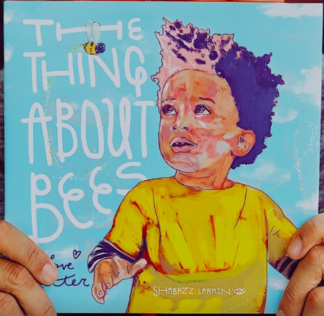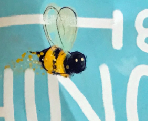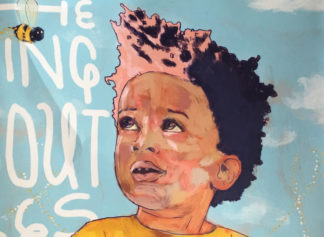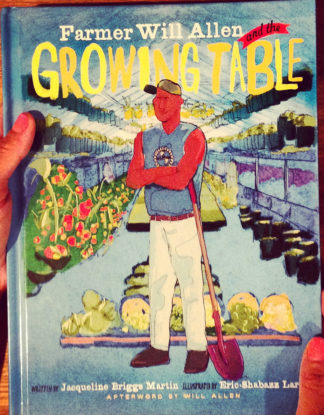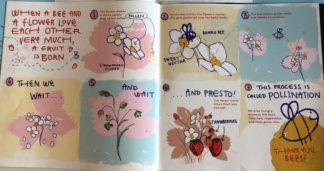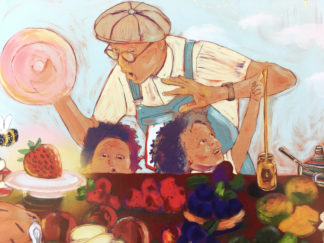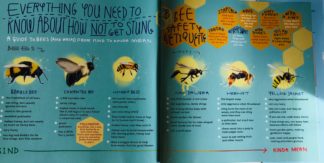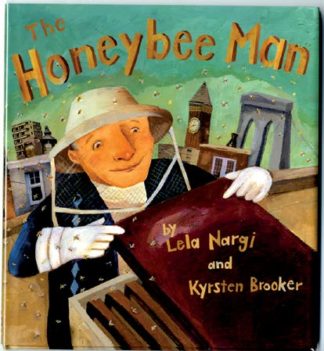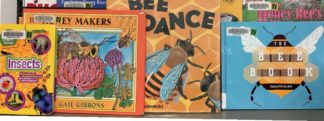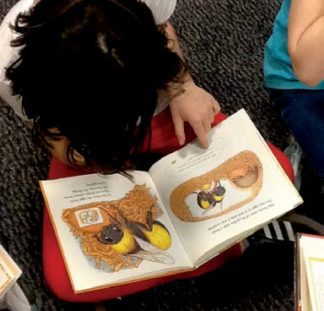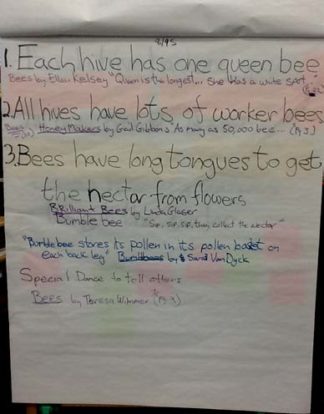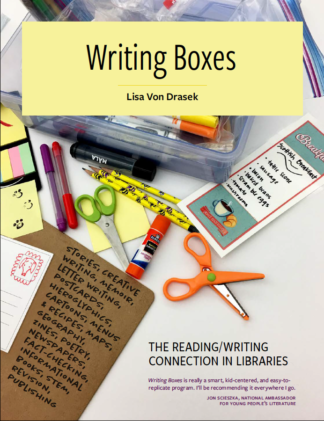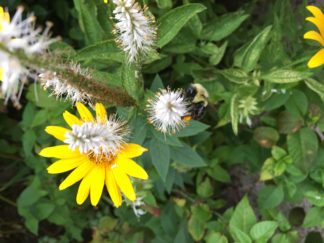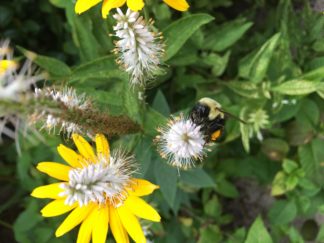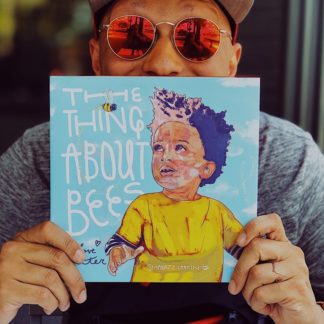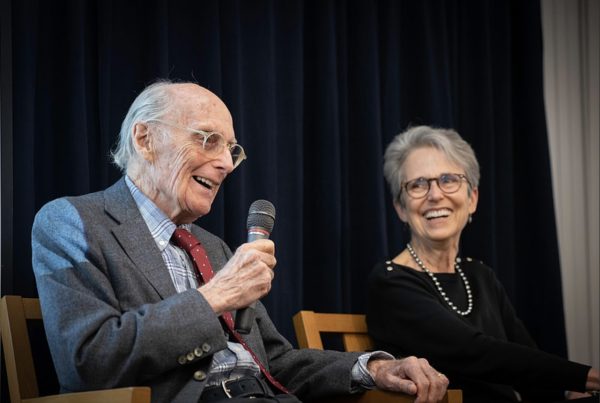The Thing About Bees: a love letter by Shabazz Larkin
Every once in a great while, when I am opening the mail, a book, an F&G (advance unbound copy of picture book “Folded and Gathered sheets”) is so stunning, so wonderful, so great, I finding myself gasping for breath. I am dying to run around the neighborhood and read it aloud to kids.
If you are in my office, in my path, waiting for your take-out order at India Palace, or having dinner with me, I have read this book aloud to you. Do I care that you are a big shot professor who may or may not have an interest in picture books, bees or curriculum? Nope. Buy this book. Buy many copies and give to teachers, librarians, and children. A classic in the making.
Where to start?
The art. Go get the book. The reproduction of a screenshot of a picture on a website does not do it justice. First notice the composition and depth perception…the stylized bee hovers in front of the glossy spot varnished title lettering trailing golden pollen.
The child also in the same plane glances up apprehensively.
But wait. The title is The Thing About Bees: a love letter.
A love letter?
Is this an informational book?
It is a hybrid. Shabazz Larkin, who you might know them from
Will Allen and the Growing Table by Jacqueline Briggs Martin (Readers to Eaters Press)
Begins with a double page spread explaining in matter-of-fact AND lyrical language how bees are part of the pollination process.
“When a bee and a flower love each other very much, a fruit is born”
This is actually the preface
The story begins with the poem, “Here’s the thing about bees.
For the book trailer go here
https://www.facebook.com/READERStoEATERS/videos/1390231024434807/
Larkin explains in the afterword, he wrote this book to conquer his fear of bees. It is a love letter to bees and the work that they do in creating the food that we eat. It is a love letter to joy, family, storytelling, science, and art.
The animated illustrations begin with a grown-up explaining that
“Without Bees…
there’s be no more picnics with watermelon.
There’d be no more smoothies with mango.
There’d be no more strawberries for shortcakes.
And no more avocados for tacos.”
And also bees are as essential as the children who are addressed as “you.”
Warm and fuzzy
like the bumble bees who Shabazz Larkin notes ” are the kindest of bees” from his research and in the last spread titled,
Everything you need to know about how NOT to get stung: A Guide to Bees (and wasps) From Kind to Kinda Mean.
Why I am so excited about this book
I do a lot of mentoring writers. One way is to think about fact based STEM writing responses to read aloud like The Thing About Bees. I already do a bee read aloud with Honey Bee Man by Lela Nargi and Kirsten Brooker.
I gather mentor texts.
Books about bees
Buchmann, Stephen L. 2010. Honey Bees: Letters from the Hive. New York:
Delacorte Press.
Dyck, Sara van. 2005. Bumblebees. Minneapolis, MN: Lerner Publications Company.
Florian, Douglas. 2012. Unbeelievables: Honeybee Poems and Paintings. New York: Beach
Lane Books.
Frisch, Aaron. 2015. Bees, Seedlings. Mankato, MN: Creative Education and Creative
Paperbacks.
Gibbons, Gail. 1997. The Honey Makers. New York: Morrow Junior Books.
Glaser, Linda, and Gay W. Holland. 2003. Brilliant Bees. Brookfield, CT: The Millbrook
Press, Inc.
Hall, Kirsten, and Isabelle Arsenault. 2018. The Honeybee. New York: Atheneum Books
for Young Readers.
Heinrichs, Ann. 2002. Bees, Nature’s Friends. Minneapolis, MN: Compass Point Books.
James, Joyce. 2008. Bees, Nature’s Children. Danbury, CT: Grolier; Scholastic
Markle, Sandra. 2014. The Case of the Vanishing Honey Bees: A Scientific Mystery.
Minneapolis, MN: Millbrook Press.
Markovics, Joyce L., and Brian V. Brown. 2010. The Honey Bee’s Hive: A Thriving City,
Spectacular Animal Towns. New York, NY: Bearport Pub.
Prischmann, Deirdre A. 2006. Bees, Bridgestone Books World of Insects. Mankato, MN:
Capstone Press.
Riggs, Kate. 2013. Bee. Mankato, MN: Creative Education.
Rockwell, Anne F., and S. D. Schindler. 2005. Honey in a Hive. New York, NY:
HarperCollins.
Silverman, Buffy. 2012. Can You Tell a Bee from a Wasp? Minneapolis, MN: Lerner.
Starosta, Paul. 2005. The Bee: Friend of the Flowers, Animal Close-Ups. Watertown, MA:
Charlesbridge.
Stewart, Melissa. 2009. How Do Bees Make Honey? Tell Me Why, Tell Me How. New
York: Marshall Cavendish Benchmark.
Wimmer, Teresa. 2007. Bees, My First Look at Insects. Mankato, MN: Creative
Education.
Winchester, Elizabeth. 2005. Bees! New York, NY: HarperCollins Publishers.
Winters, Kari-Lynn. 2013. Buzz About Bees. Ontaria, Canada: Fitzhenry & Whiteside.
Woodward, John. 2001. Honeybees, Animal Families. Danbury, CT: Grolier Educational.
Fact Checking Program
Preparation
Step 1: Gather books that include facts about bees. They can be poetry
books, picture books, and field guides to insects and bees.
Step 2: Select a picture book title to read aloud. I’ve used The Honeybee Man, by Lela Nargi, as well as DougFlorian’s UnBEElievables: Honeybee Poems and Paintings.
Step 3: As preparation to the program, read the title and identify facts that may come up in discussion. If the writers don’t offer any facts or are shy, you might prompt with “How do
we know there’s a queen bee?” Illustrated informational picture books
like About Bees, by Cathryn Sill, can also be prompts for a fact-checking
workshop.
The Workshop
Step 1: Read the book aloud.
Step 2: Solicit facts gleaned from the text, and write them out on
chart paper. You may have to start with an observation of your own
to model. Then lead a five-minute discussion around the question
“How do we know something is true?”
Step 3: Define fact-checking. The goal is to prove something is true
by looking in other sources for confirmation. If the group contains
children of ages nine and up, you might include information about
the authority of the writer. And you can point out parts of a field
guide, including the index and table of contents.
Step 4: Model how to find a fact in an informational book.
Step 5: Divide children into groups of three or four and hand out
bee books and field guides. If you have access to computers or
technology, provide database links for fact-finding.
Step 6: Give the group 15–20 minutes to find the facts, assigning
one fact per group or letting the writers choose. They can write the
facts on sticky notes or bookmark the page where the fact was
found.
Step 7: Regroup, and solicit the confirmed facts. Model the
importance of noting the book page information for each fact .
Step 8: Ask “How did the research process go? What it easy or
hard? Were there any surprises?” A technique for this discussion
can include KWL: What did I know? What did I want to know? What
did I learn?
Step 9: Give a five-minute warning for cleanup. Remind writers
when the Writing Boxes are available to use in the library. Clean up
the area, put away supplies, and put the books back onto the
shelving cart.
Step 10: Take a few minutes to allow children to select
informational books of interest or share their findings.
The Thing About Bees
With its playful language, animated art, fact-filled pages is an inspiring mentor text.
I imagine that this title is the perfect prompt for research and creative assessment of comprehension and knowlege.
First read aloud The Thing About Bees then
-
- Pick a topic- something that I or someone might be frightened of like thunderstorms or spiders.
- Do research on the topic.
- Finish this sentence, The thing about spiders is..
- Explain the facts, draw pictures, maybe even create a picture book.
Research
What is research?
Careful study of a subject in order to uncover facts.
For More Writing Prompts
And how to facilitate writing in libraries or home
Writing Boxes: The Reading/Writing Connection in Libraries
by Lisa Von Drasek
Free download at https://www.lib.umn.edu/publishing/writingboxes
Added on Sunday
So now I am nuts about bees. Especially the friendly ones. From this morning’s dog walk.
What Can I tell you about Shabazz Larkin
From his website

